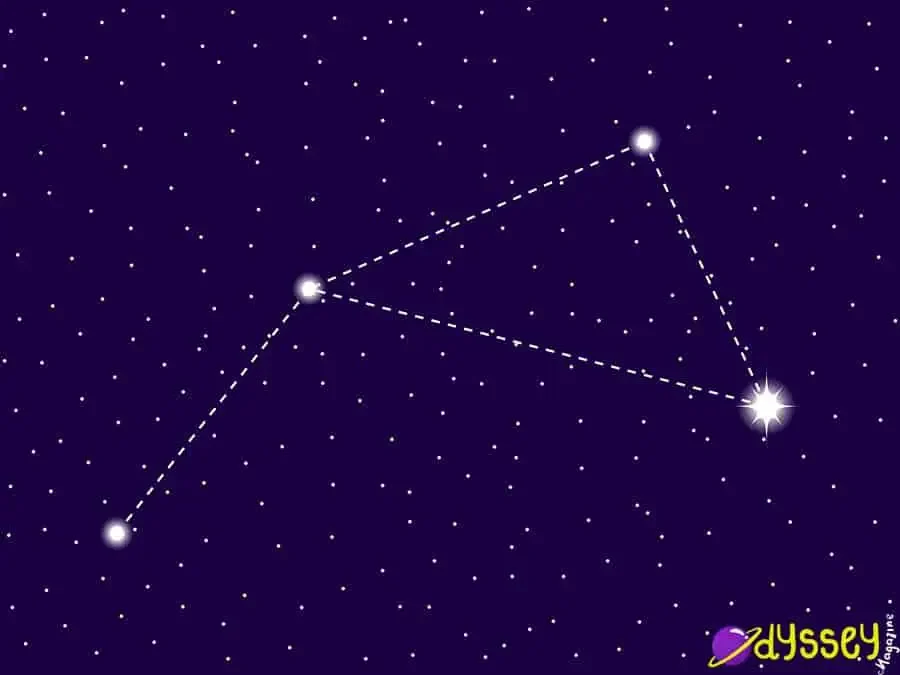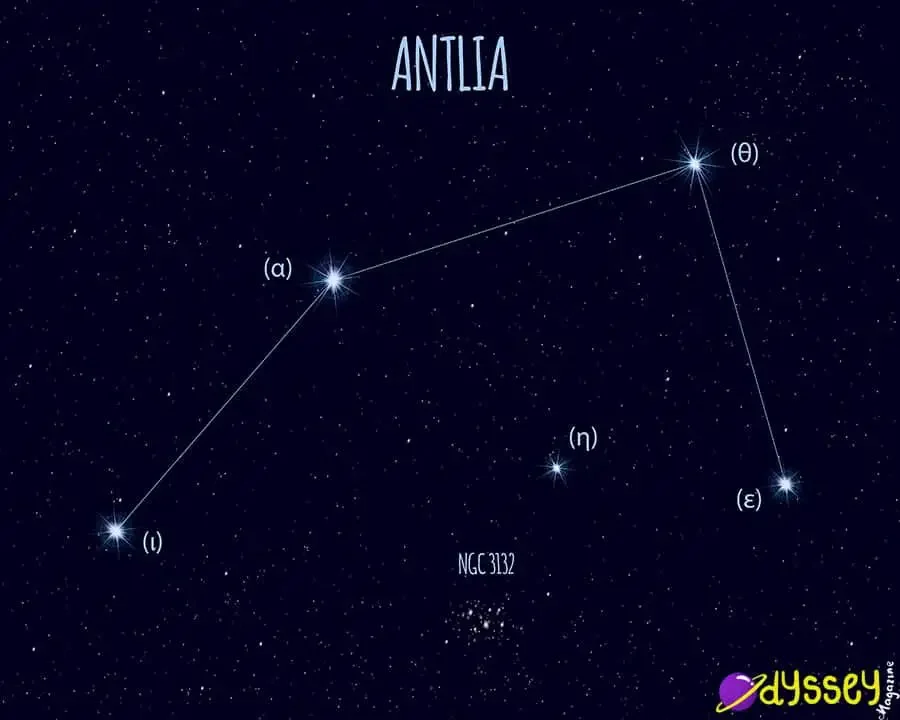Antlia Constellation | The Air Pump
One of the lesser known constellations in the night sky and with few stars, Antlia might not have been one high up on your list to see. However for those in the Southern hemisphere, it might be pretty easy to find this constellation, even though it is typically quite faint. But who discovered this constellation, and what are it’s main stars up there in the night sky? Well, let’s what we’re going to go ahead and explore to find out a little more about it.
- Bordered By; Hydra, Pyxis, Vela, Centaurus.
- Named after; The Air Pump
- Declination; -24°
- Brightest Star; Alpha Antliae.
- Best seen; November
- Size rank; 22nd
- Constellation family; Lacaille
- Pronunciation; ANT-LEE-AH

Unlike most other constellations which take their names from Greek mythology, Antlia is named after something a little different. Although you’d be forgiven for thinking it may have some mystical name, it’s actually named after the Air pump. Yep, that’s right – it takes it’s name from the air pump, which was created back in the 17th Century.
The Antlia constellation is one of fourteen constellations discovered by Frenchman Nicolas Lacaille. It’s full name was actually originally Antlia Pneumatica, obviously after the pneumatic air pump. However later down the line, this name was shortened simply to Antlia, which was a much better option for the constellation.
Although it’s definitely more visible from the South, it’s still possible to see this constellation in the Northern hemisphere. The best time of year to see Antlia is definitely during the Spring time.
Whilst there aren’t a lot of stars in this constellation, and they’re all relatively faint, they’re still worth looking at. As well as the stars in Antlia, the constellation also has also got a large nebula in it too.

- Alpha Antliae (α) – The brightest star in this constellation is a little different, as it hasn’t been given an official name like many other stars. Although it has more than double the mass of the Sun, it’s a K-type star meaning it’s not quite as hot.
- Epsilon Antliae (ε) – Another one of the brighter stars in this constellation, Epsilon Antilae is relatively faint, however it’s still pretty visible in the Southern hemisphere without a telescope. This is a giant star, with more than 37x the radius of our Sun.
- Iota Antliae (ι) – Another faint star in this constellation is known as Iota Antilae. It’s an evolved red clump giant star which has 12x the radius of our Sun and 1.5x it’s mass. It’s also more than 3 billion years old.
- Theta Antliae (θ) – Now, one of the binary stars in this constellation is Theta Antilae, which is an A-type main sequence star. In terms of stars, it’s only around 430 light years away from our planet Earth.
- Eta Antliae (η) – The final major star within this constellation is Eta Antilae, which is a double star (it’s probably a binary star but astronomers aren’t certain). The main star is an F-type main sequence star.
As well as these stars, you’ll also find the NGC 2997 Nebula in the Antlia constellation too. It’s also an unbarred spiral galaxy. The galaxy is approximately 40 million light years away from us.
All in all, although it’s not one of the bigger or brighter constellations, there’s no doubting that Antlia can be impressive on certain nights. Though it’s a relatively small constellation with few stars, it’s still definitely worth looking out for if you’re in the Souther hemisphere. Whilst it was once known as Antlia Pneumatica, nowadays we just refer to this constellation as Antlia.





